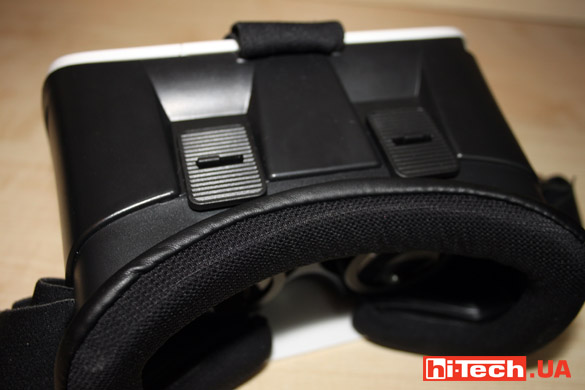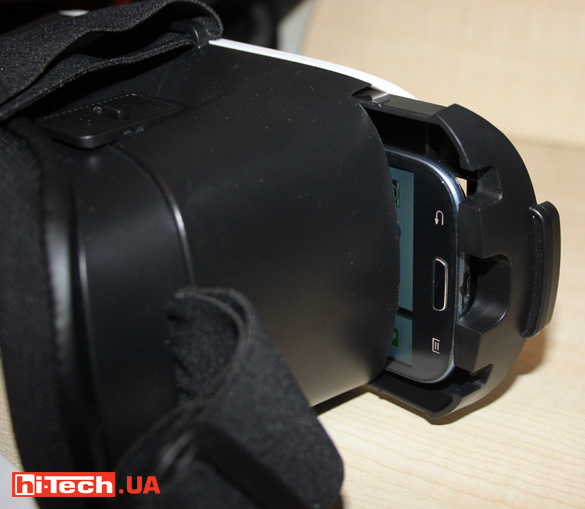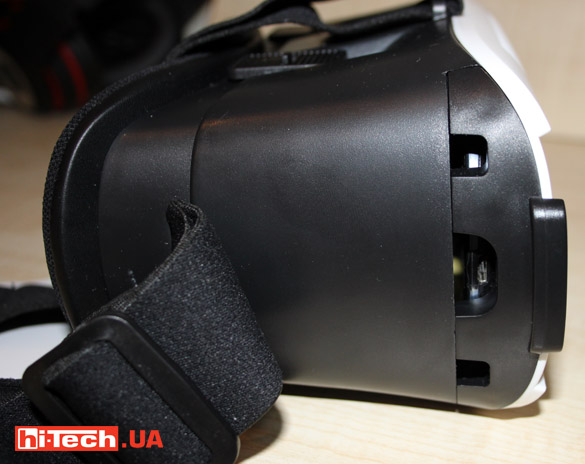Review of virtual reality glasses VR BOX Version
17.08.15
About two years ago, Oculus created a concept that only those who were particularly interested knew about, and only super-secret testers saw. Virtual reality has become a full-fledged trend in our industry over the past year. From a concept, the Oculus VR headset has become the basis for new developments.
A little later, variations on the theme appeared, both in terms of capabilities and price. For example, the cost of a cardboard Google Cardboard was several dollars. In it, an Android smartphone with a special application was used as an image source. ![]() Samsung tailored its brainchild to a single smartphone model, and Microsoft went its own way and created virtual reality glasses.
Samsung tailored its brainchild to a single smartphone model, and Microsoft went its own way and created virtual reality glasses.

The Chinese are not standing aside either. They are actively working on software, which was rare 2 years ago. Moreover, there is nothing strange in the fact that they rushed to release budget versions of trendy devices. Virtual reality glasses VR BOX Version are a plastic version of Cardboard from Google, but cheaper than their analogues.

The glasses are made in a traditional form. The front part is collapsible. It is made of plastic, which gives the impression of being cheap. Especially when you remove the panels. The inner part, for the face, is partly made of rubber and soft fabric. The head straps are similar to those used on the Samsung Gear VR. By the way, there is no pressure on the bridge of the nose and wearing is more comfortable. The VR BOX Version weighs just over 400 g. ![]() Together with the smartphone, the weight is decent, but you can get used to it.
Together with the smartphone, the weight is decent, but you can get used to it.

The lenses are adjustable in distance from the eyes and between each other. What is important is that each one is separate. Therefore, if the optical parameters of your eyes are different, then such glasses are easier to adjust. There are no control buttons and everything works using software running on the smartphone.

The smartphone is installed in a tray that slides out from the side. ![]() Since the smartphone is not connected in any way to the glasses, the sound comes directly from the speakers or headphones.
Since the smartphone is not connected in any way to the glasses, the sound comes directly from the speakers or headphones.

The glasses accommodate devices with diagonals from 4.7 to 6 inches. The maximum dimensions of a smartphone can be 163×83 cm. Of course, you can install smaller devices, but then there will be too large black fields around the edges. The kit includes spacers to prevent the smartphone from dangling. There are many programs for working with such glasses, both for Android and iOS.

You can try both watching “voluminous videos” from a special channel on YouTube, and a number of applications that are offered in the Google Cardboard program package or other similar ones. ![]() Control occurs using head turns, which are tracked by the smartphone’s gyro sensor.
Control occurs using head turns, which are tracked by the smartphone’s gyro sensor.

In a word, this is a good solution for those who have already played enough with cardboard versions of virtual reality glasses and are not yet ready to buy more expensive devices. ![]() VR BOX Version makes you fully understand the need to purchase this type of gadget.
VR BOX Version makes you fully understand the need to purchase this type of gadget.

VR BOX Version
Screen diagonals: 4.7-6 inches
OS Compatibility: Android 4.2, iOS7.0 and above
Dimensions: 265×197×134 mm
Weight: 411 g
Supplier: GearBest
Price: $27
Rating:
+ versatility
+ comfortable to wear
– body materials
– heavy weight
hi-tech.ua project manager
вологість:
тиск:
вітер:
BlackView W60 smartwatch review: protected monthes

When it seemed that Chinese manufacturers could no longer surprise us with equipment at a low price, the BlackView W60 smart watch appears with a huge battery, a flashlight and a nice look interface
The Ministry of Foreign Affairs of Ukraine will use artificial intelligence to voice official statements
artificial intelligence events in UkraineIn general, the Ukrainian Ministry of Foreign Affairs launched a comprehensive program for the introduction of artificial intelligence
Sales of the game Fallout 4 increased by more than 7500%, and 1 million players played Fallout 76 in a day
Fallout games movie statisticsAccording to Bethesda, the daily audience for all Fallout games has reached an impressive five million players.





